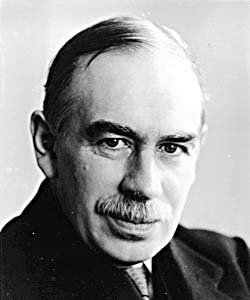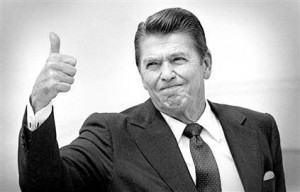Well, it’s Ronald Reagan’s 100th birthday, and all the garden-variety conservatives are busy touting that. It seems, therefore, appropriate to republish some of the actual facts about Ronald Reagan, who, like virtually all politicians, talked a good game but didn’t deliver. The following is from a post I did December 16th, 2009:
It’s high time we dispel once and for all the absurd myth that Ronald Reagan was somehow for deregulation.
Statistically speaking, the size of bureaucracy, in terms of sheer civilian manpower, increased dramatically under Reagan, so that by the time he was finished, there were well over 200,000 more government workers than in 1980, when he took office.
In fact, the size of government under Ronald Reagan grew astronomically in virtually every way. To wit:
At the end of the first quarter of 1988, government spending had increased to 28.7 percent of the national income (“national income” refers to the private money generated by the hard-working citizens of this country). To put that into better perspective, this figure is even higher than Jimmy Carter’s outrageous numbers: in his final year as president, Carter maxed out at staggering 27.9 percent. Indeed, both Gerald Ford and Jimmy Carter cut government spending far more efficiently than Ronald Reagan. Here are some of those numbers, which don’t lie:
Under Reagan, Social Security spending went from 179 billion in 1981 to 269 billion.
Farm programs skyrocketed: 21 billion to 51 billion.
Medicare jumped from 43 billion in 1981 to 80 billion in 1987.
During the Reagan era, federal entitlements alone rose from 197 billion to 477 billion.
Reagan promised the people that he would “abolish” the Department of Energy and the Department of Education. He did no such thing. On the contrary, these budgets more than doubled under Reagan. In his own words: “We’re not attempting to cut either spending or taxing levels below that which we presently have.”
In addition to not cutting, however, Reagan also upped the spending a few notches, thus: the Gross Federal Debt went from 900 billion to 2.7 trillion. Ford and Carter simply doubled it; Reagan tripled it.
Spending habits (which are a better gauge of government size than are taxes) increased under Reagan’s leadership in almost every way. But in any case, Reagan hardly cut taxes: by the end of 1987, government revenues, a good indicator of taxes and tax cuts, were nearly identical to those of Carter.
Reagan’s Economic Recovery Act, so-called, was negated a year or two later by his Tax Equity and Fiscal Responsibility Act (TEFRA).
He furthermore placed a five-cent-per-gallon tax on gas.
He hiked up taxes on the trucking industry.
He succeeded in increasing the Social Security tax – to the tune of 165 billion. In terms of foreign trade, Reagan was the most mercantilistic since Herbert Hoover: import restriction doubled under Reagan, and quotas were placed on countless products.
Foreign aid went from 10 billion to 22 billion.
Reagan also supported seatbelt laws and federal airbag laws.
Reagan increased regulation of the auto industry by not opposing that monstrous thing known as Corporate Average Fuel Economy (CAFÉ).
In the final analysis, Reagan, like all the other bureaucrats, was just another interventionist. So please don’t be fooled.
If the mark of a minimal government is a government which, in Thomas Jefferson’s words, “extends only to such acts as are injurious to others” (i.e. which limits itself to protection against the initiation of force), then Reagan was about as far from that as any President ever, right or left.
That is, until now.



 It’s high time we dispel once and for all the absurd myth that Ronald Reagan was somehow for deregulation.
It’s high time we dispel once and for all the absurd myth that Ronald Reagan was somehow for deregulation.